Sony XR-65A95L Review
Another terrific flagship OLED from Sony
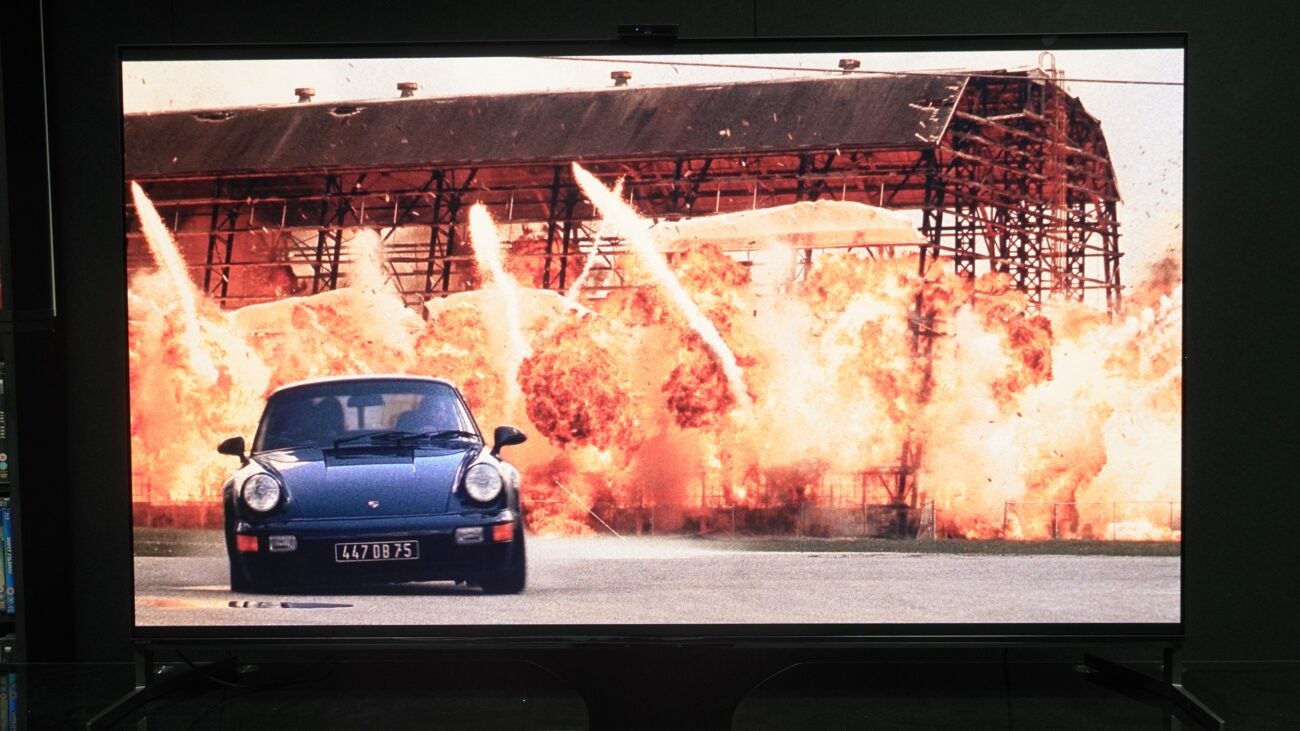
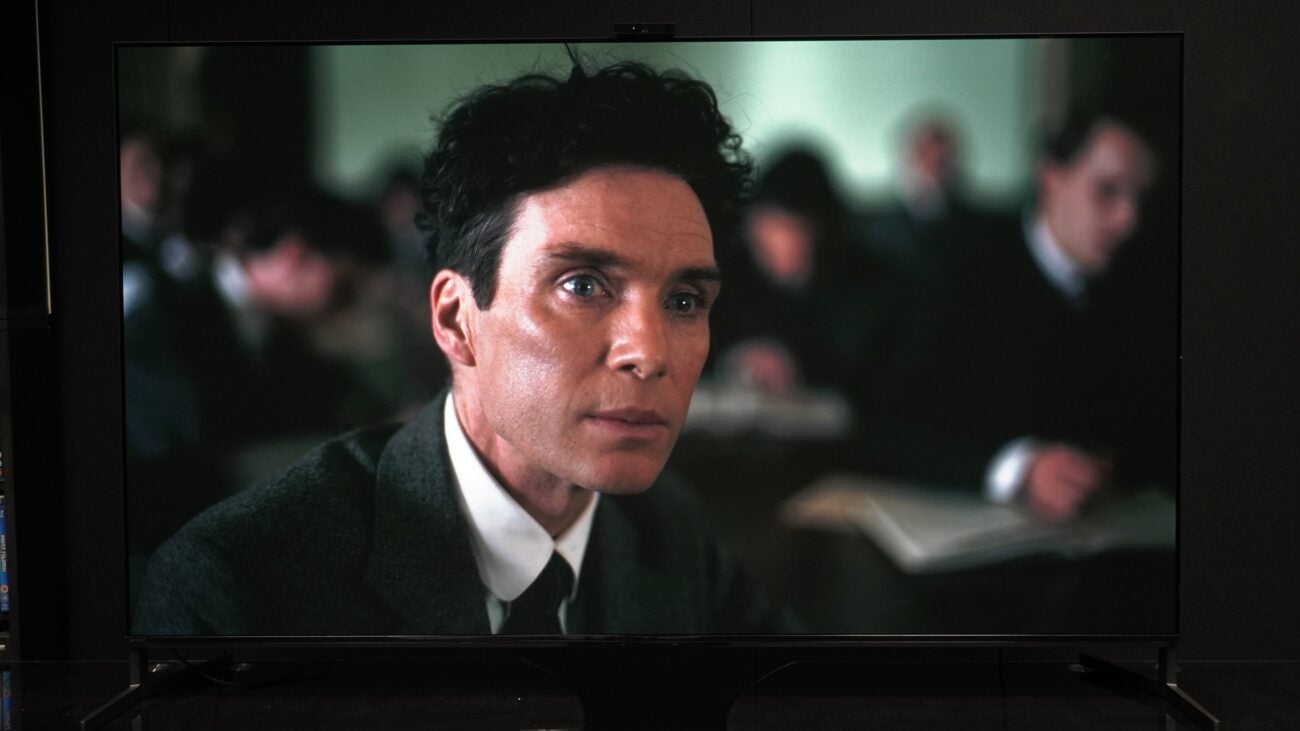
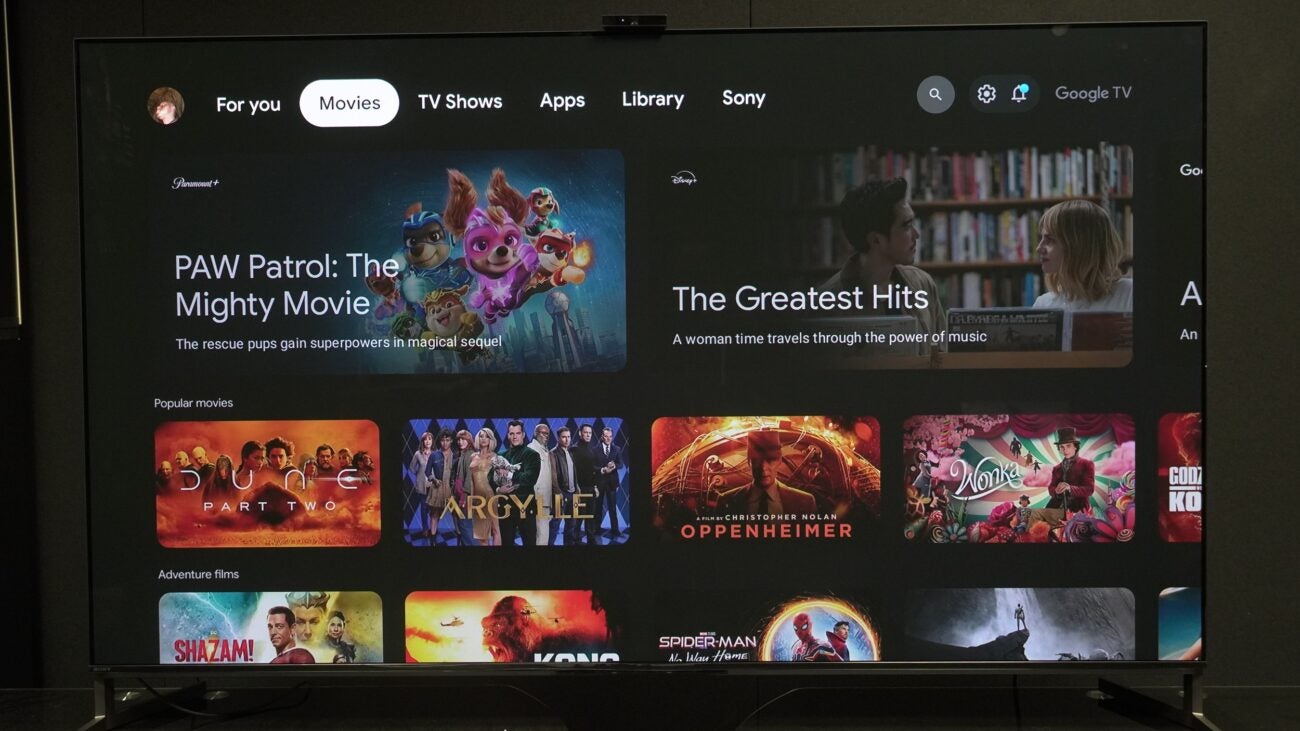
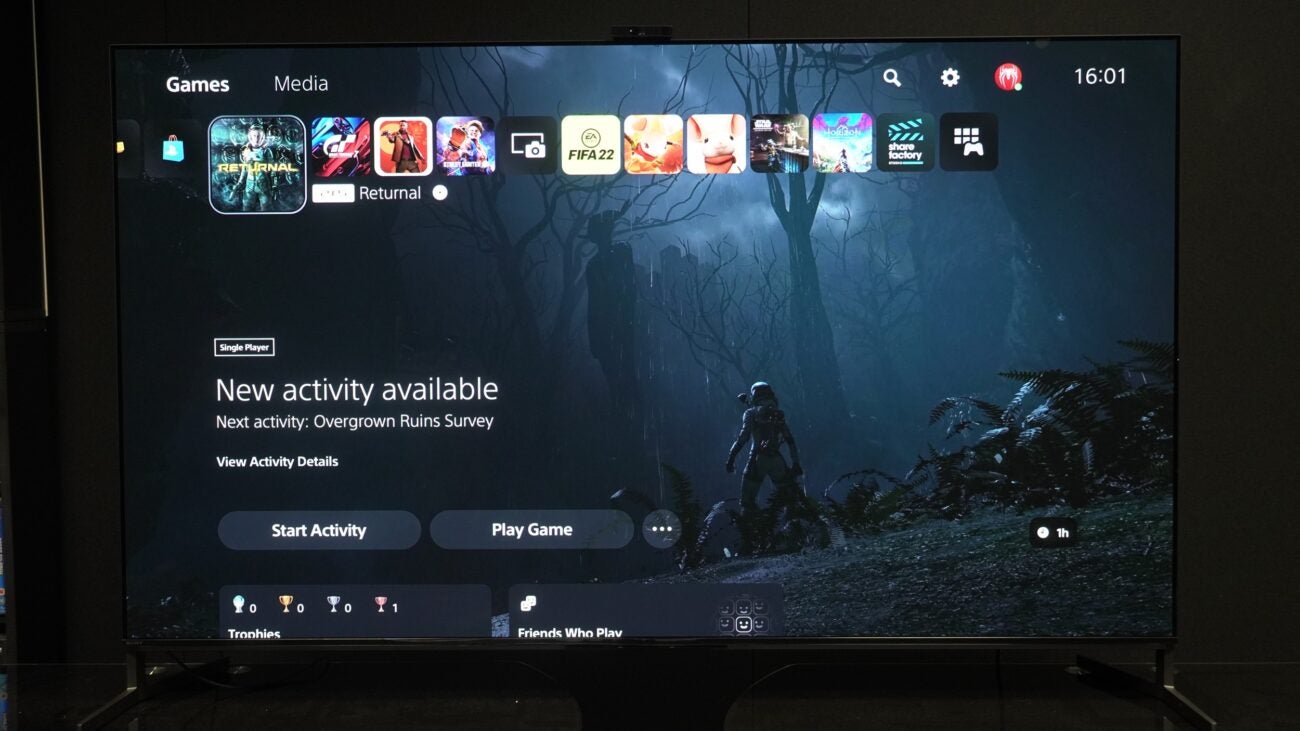
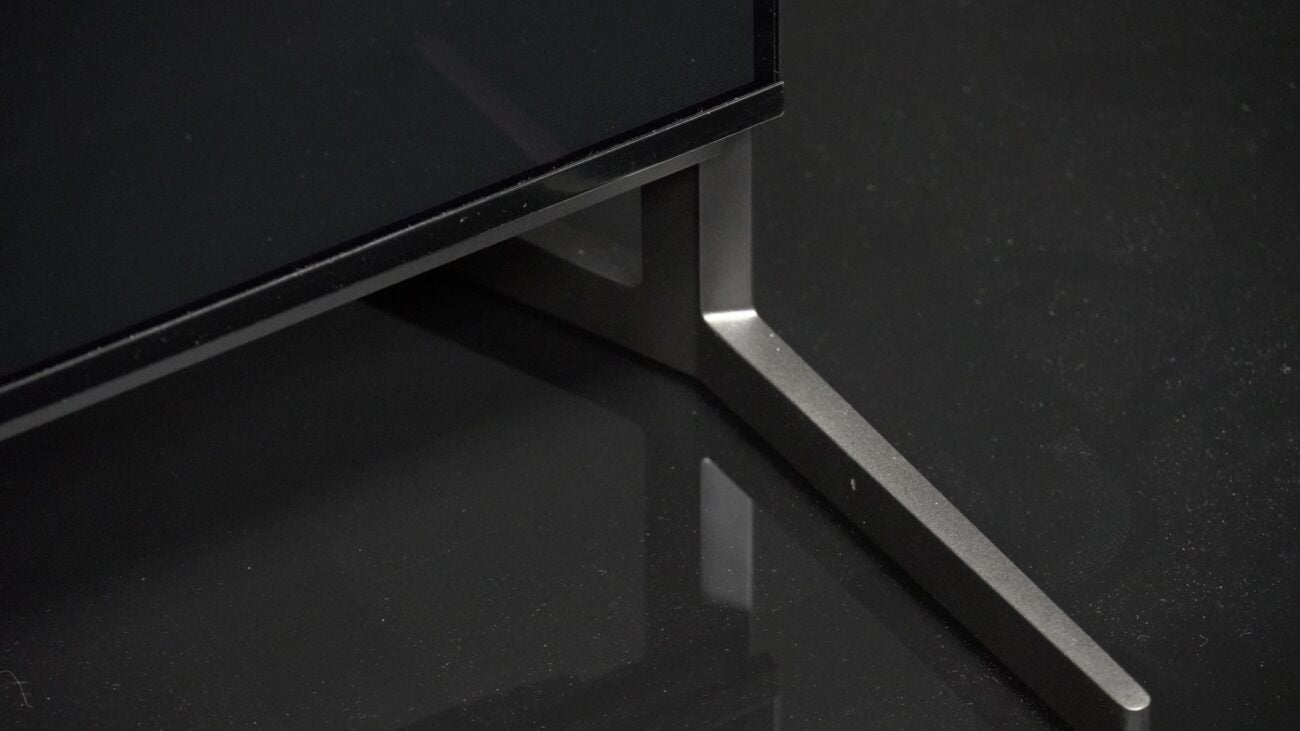

Verdict
An excellent 4K TV that’s a more complete version of its predecessor, the Sony A95L produces subtle, nuanced improvements over traditional OLEDs, and features one of the best built-in TV sound systems. It is pricier than the rest of the competition, though.
Pros
- Subtle, nuanced, and colourful picture
- One of the better TV sound systems
- Improved set of gaming features
- Intuitive smart interface
Cons
- Expensive
- Black levels lack a little detail
- Feet design is still a little awkward
Key Features
- Dolby Vision GamingThe only model in the 2023 Sony line-up to support Dolby Vision Gaming
- Game MenuChange gaming settings on the fly
- Eco DashboardSave energy by adjusting TV settings
Introduction
Sony’s flagship TV debuted later in 2023 than most of its rivals, with the brand seemingly taking its time to get things right with its XR-65A95L OLED TV.
The A95L is a second-generation QD-OLED, boasting a brighter screen from Samsung Display, a new design that should make it easier to accommodate, a tweaked sound system, and a few new high-end gaming features.
The Sony A95K was a TV I was very much impressed with, and the Sony XR-65A95L has the makings of a screen that could top it.
Design
- New stand
- Wide footprint
- Minimalist looks
A few tweaks have been made to the design of the Sony XR-65A95L that incorporates feedback from the A95K.
Instead of the integrated stand that acted as a counterweight to keep the TV upright on the A95K, Sony has (thankfully) abandoned that concept for blade feet.
These feet can be positioned in one of three ways: towards the edges, in a narrow position (for smaller furniture) or it can prop up the screen to place a soundbar below.
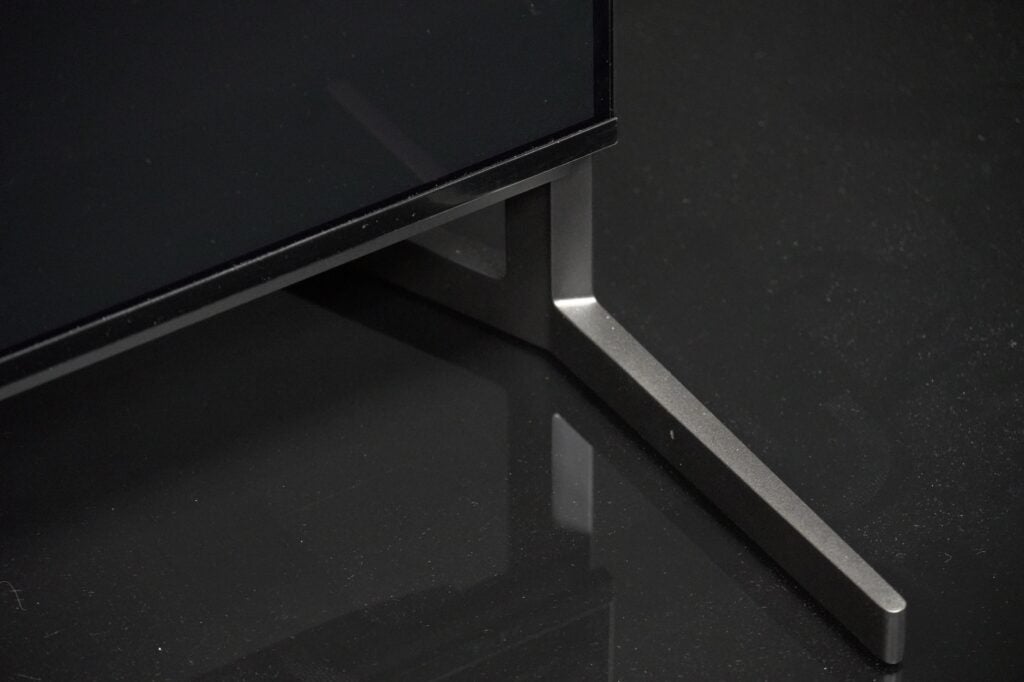
If you are going to go for the option where the feet are towards the edges, this brings up a problem in that you’d need a wide surface to plant this screen because of its (quite literally) wider footprint. The stands I test on are made for 65-inch TV, but absolutely not for the A95L as one of its feet ends up hanging off the sides. That means I have to use both stands to sit the A95L on.
With the 77-inch model the feet can only be arranged in the centre. Otherwise, the rear panel doesn’t jut out as much as previous Sony OLEDs, looking slimmer and more discreet. That’ll suit those looking to wall-mount the set given it’ll sit closer to the surface.
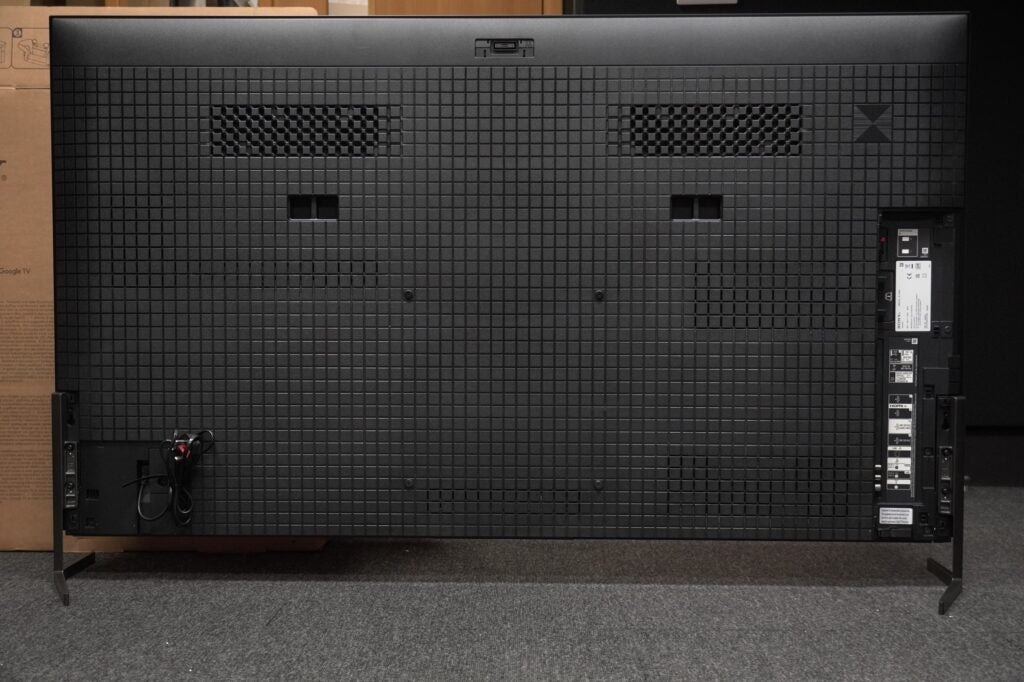
The design features a minimalist aluminium bezel that ensures what’s on screen has all your attention. And in its ‘One Slate’ orientation (feet out towards the edges) it takes on a massive, all-encompassing, room-dominating feel.
The screen features a heat diffusion sink to manage and distribute energy and heat more efficiently, and avoid image retention. The A95L also comes packaged with the BRAVIA Cam that connects to the top of the screen.
Sorplas is a Sony material that it uses for the A95L’s rear panel. It says this material reduces the use of virgin plastic in the TV’s construction, while the box has been reduced in size by 15%, plastic materials reduced by 35%, and ink usage down by 90%.
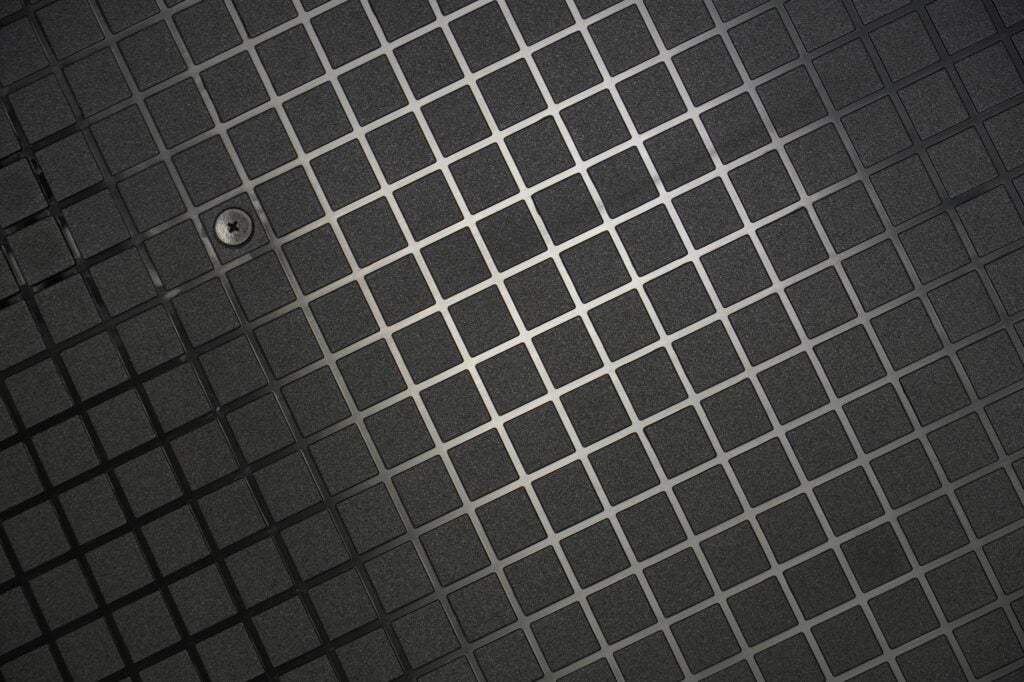
Operating System
- Google TV interface
- Tweaked Sony menu settings
- UK catch-up apps present
More tweaks can be found in the Sony A95L’s operating system. The front-facing interface remains Google TV, but there’s a revised menu system that’s part of a new platform which I expect Sony will be rolling out to its 2024 screens.
This new menu system has a more fluid look and bigger icons that get embiggened as you hover over them. It can be edited to add the features you want for quick access such as audio settings, ambient optimisation, picture settings, expert panel settings etc.
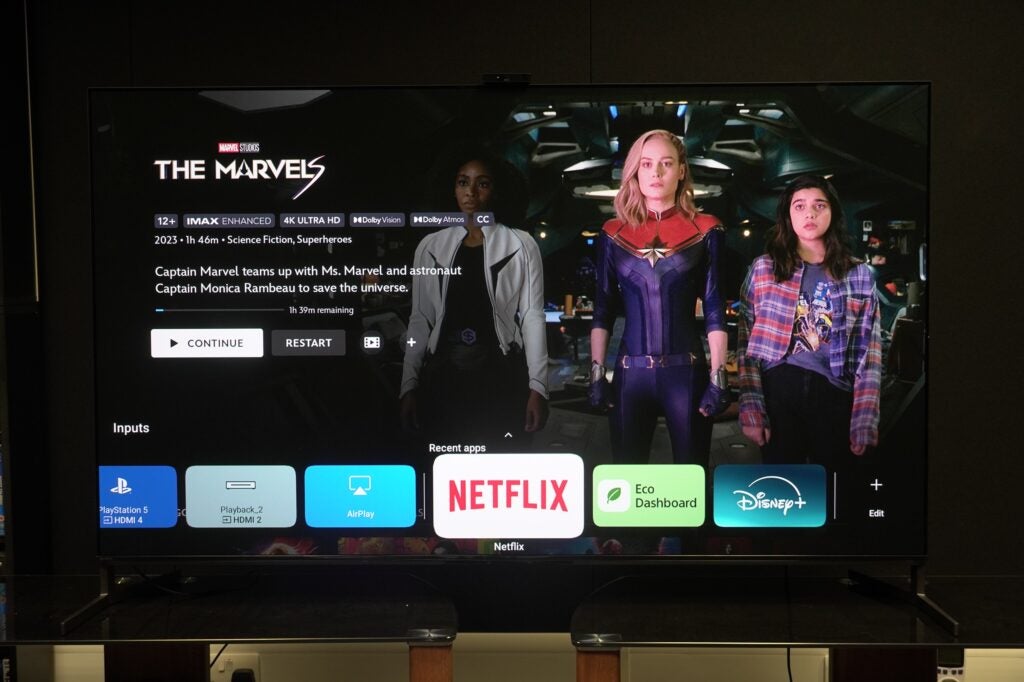
The interface is Google TV for getting entertainment from streaming apps, as well as personalising the whole curation process to keep you watching more and more.
Google TV puts personalisation and recommendations at its core, the more you offer the more you’re likely to get back in terms of useful content, especially if you give it access to the streaming apps you frequently use. Visually it’s an upgrade over Android TV with more colour and more useful information (such as Rotten Tomatoes ratings) that may influence your choices.
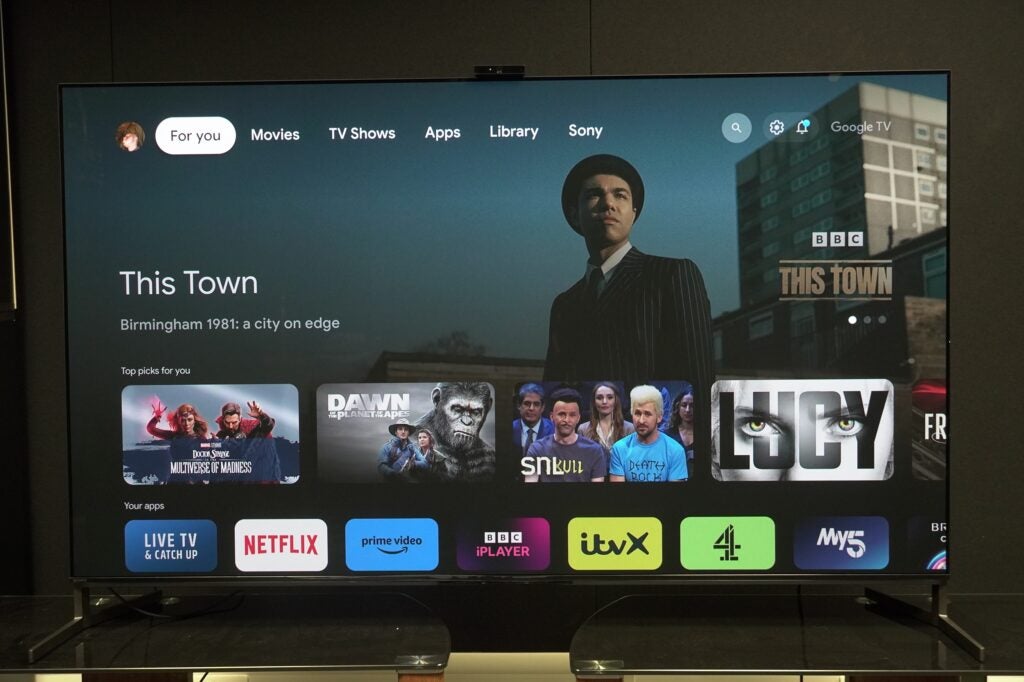
I like Google TV, as it’s swift, responsive, and mostly intuitive, though the placement of your ‘My List’ still bothers, discarded in a separate section that you’re unlikely to visit often.
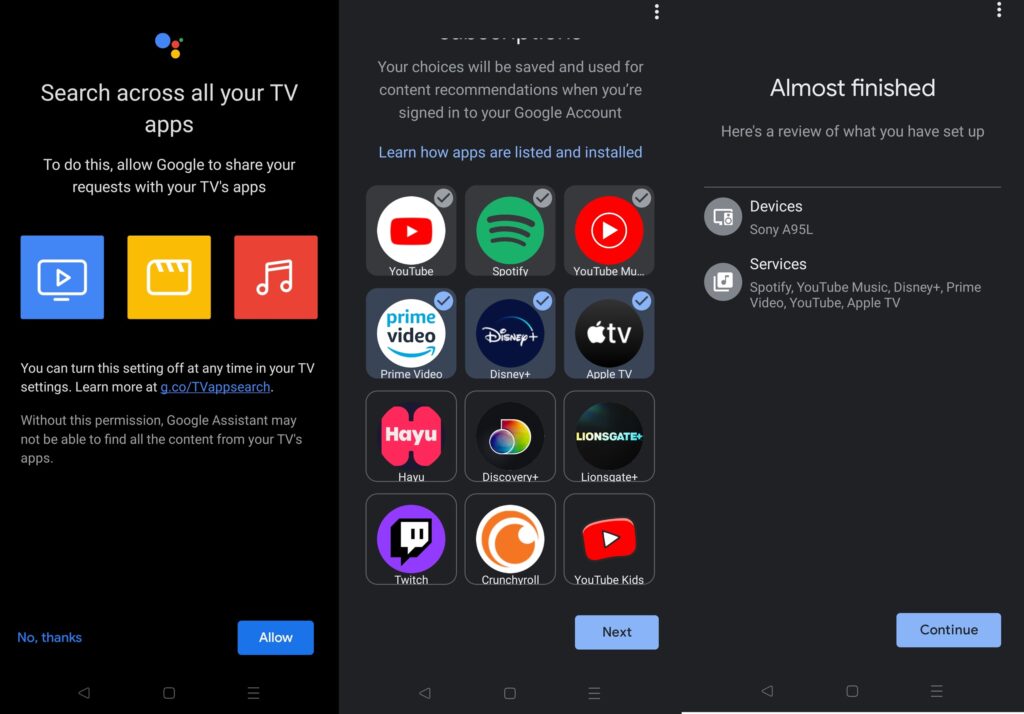
There’s no Freeview Play but unlike current Phillips’ Google TV models, the UK catch-up apps are included. Sony is keen to emphasise that it’s not just the recommendations, but the mobile connectivity that’s also key to the experience, with the ability to add a title to your library on your Android phone and have it waiting for you when you return home, forming a tether from a small screen in your hand to the biggest screen in your house.
The new remote is backlit – helpful in a darkened room – with a nice aluminium finish. You’ll find menu keys, a key for Google Dashboard, an app key for direct access to the Sony-owned Crunchyroll anime streaming service. A conventional remote with more buttons is packaged with the TV too, and both are good to use.
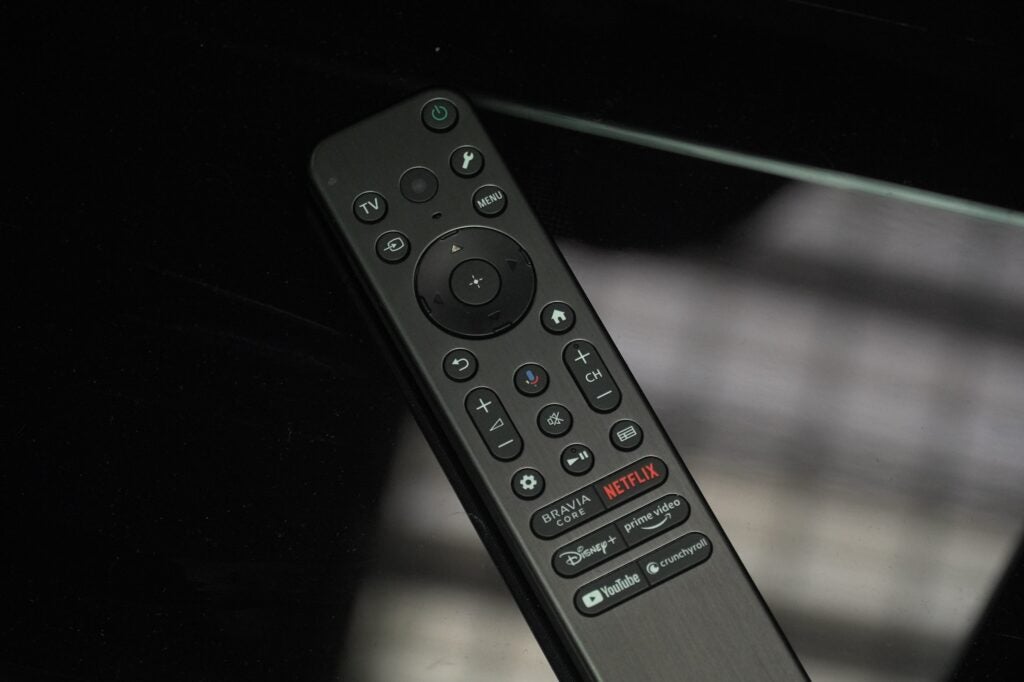
Features
- Dolby Vision Gaming support
- PS Remote Play feature
- BRAVIA Cam include as standard
The Sony A95L’s gaming specs have been revised with the introduction of Dolby Vision Gaming, though the PS5 does not (as yet) support this HDR feature, which currently leaves this being an option only for the Xbox Series consoles, which is a little odd.
4K/120Hz is possible with the A95L supporting a suite of the Perfect for PlayStation 5 features. That refers to the (useful) Auto HDR Tone Mapping that automatically senses the TV’s HDR performance and calibrates accordingly. Auto Genre Picture Mode is a fancy way of describing the TV’s auto low latency mode that automatically puts it into its lowest latency.
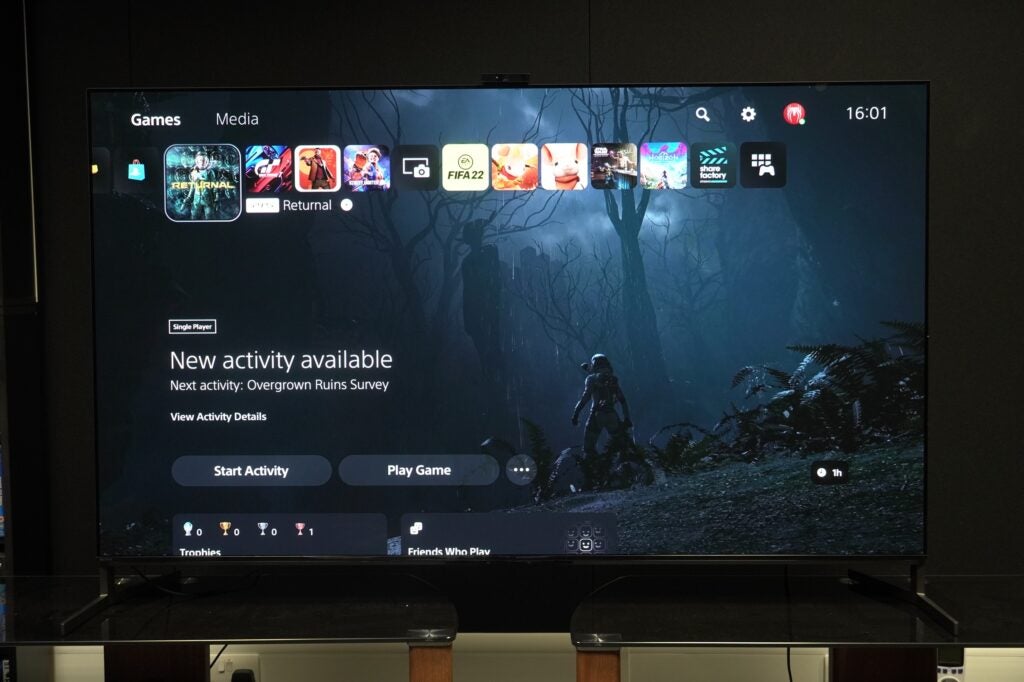
I measured that latency at 16.2ms, which is good, but short of the likes of Samsung and LG. Even at 120Hz (at 1080p) and the Sony A95L records 7.9ms, which is slower than the Philips OLED908.
Sony doesn’t appear to have as great an interest as other TV brands in certification for AMD or Nvidia VRR solutions, but with HDMI VRR support, the TV will be compatible with those options – it just won’t benefit from the optimised features.
The PS Remote Play feature makes it possible for remote gameplay with the PS5 (or PS4) console regardless of where you are. The console could be upstairs and you could connect it to the TV – you don’t even have to be on the same Wi-Fi network. There’s no 4K support and ideally you wouldn’t use this feature with a game that requires fast twitch responses like an FPS.
Game Menu sees Sony take a leaf out of other TV manufacturer’s playbooks and make it easier to change game settings on the fly. There are specific modes to choose from to enhance the performance for FPS, real-time strategy games, or Standard. Depending on the mode, it’ll improve the brightness/adjust the gamma to give you a peek into those OLED black levels to spot an enemy.
Sony has also added screensavers in a similar way to Samsung’s Ambient Mode, whereby you can have a selection of screenshots when the screen is idle.

Connectivity reveals four HDMI inputs, two of which are HDMI 2.1 inputs. Others include an RF terrestrial cable, two satellite inputs, digital audio output, two USB inputs, and Ethernet for a hardwired connection to the Internet. Wirelessly there’s Wi-Fi (naturally), Chromecast, AirPlay 2, and Bluetooth 5.2.
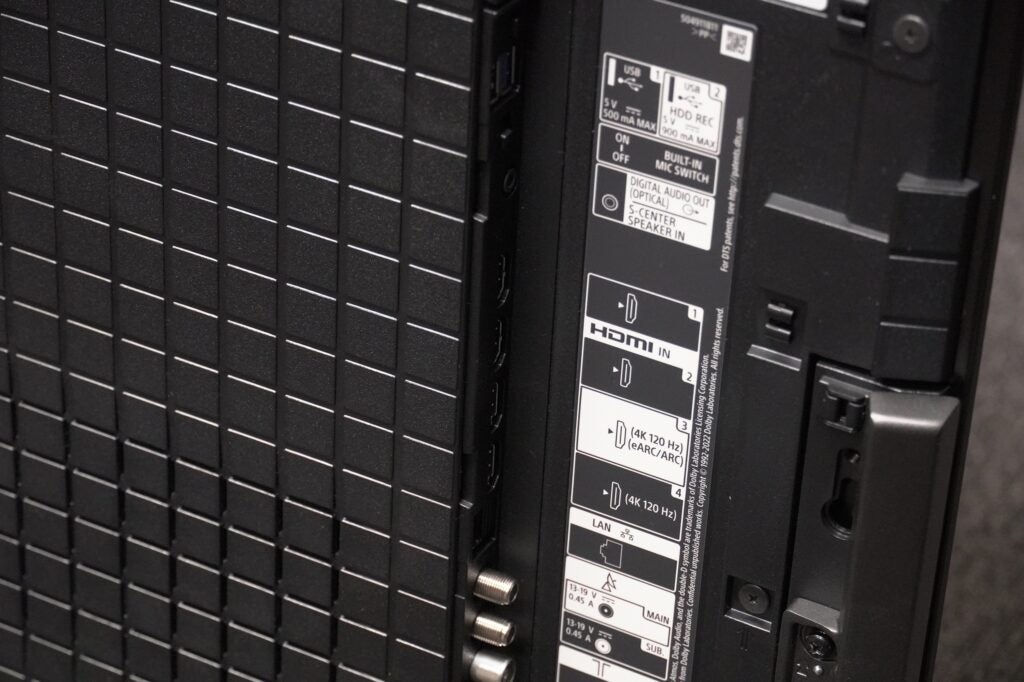
AV support offers HDR10, HLG, and Dolby Vision HDR (for films and TV), along with IMAX Enhanced (which is compatible with BRAVIA Core) and Netflix Adaptive Calibrated mode returns. Dolby Atmos is supported, as are DTS variants that include DTS:X, a boon for home cinema enthusiasts.
The BRAVIA Core feature offers 5, 10 or 15 credits to redeem movie purchases (you can pay for more), and up to 24 months of streaming. It’s effectively a store and streaming service put together, but requires an 80Mbits connection to get up and running.
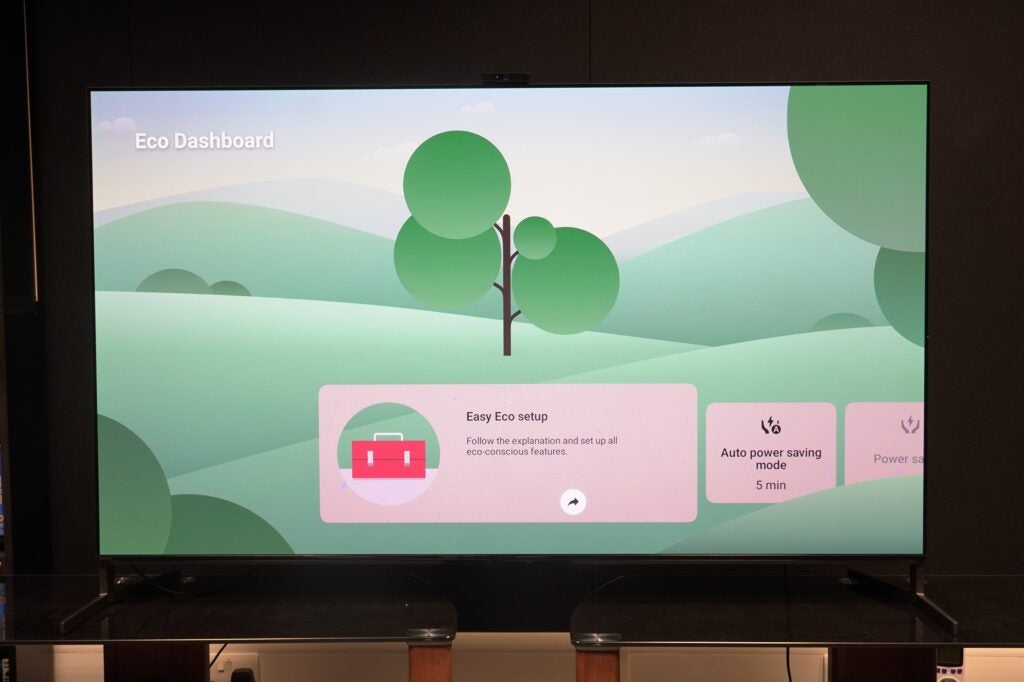
With its 2023 (and future) TVs, Sony has placed an emphasis on making customers aware of their energy consumption. The Eco Dashboard presents a picture of a tree, and as you change settings to reduce energy it gets bigger.
The BRAVIA Cam comes with the A95L as standard and has multiple uses. It can dim the screen’s brightness by sensing when you’re in front of the TV or away, and with its Ambient Optimization Pro feature it can optimise the picture for where you’re sitting (as well as angling the output of sound). There are other features such as gesture control, which works better than you’d expect, even if it’s not as quick as simply using the remote.
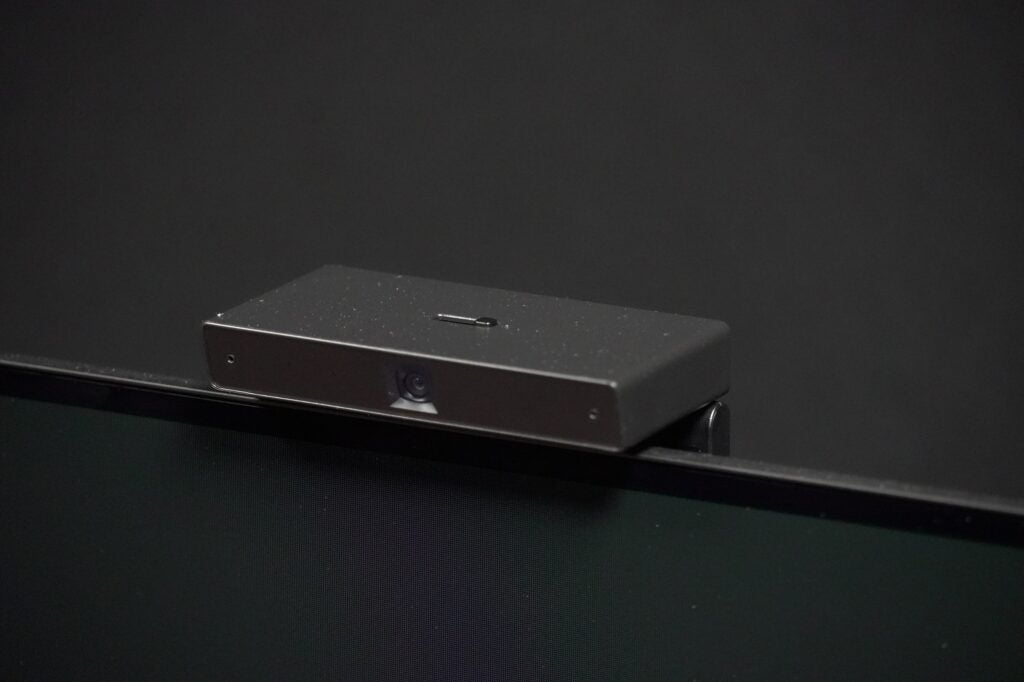
Picture Quality
- Colourful image across all modes
- Impressive motion processing
- Not the best near-dark performance
There have been many expectations surrounding this TV, myself included after I reviewed the A95K, and the A95L is a very good TV. However, I can’t shake the feeling that it could be even better.
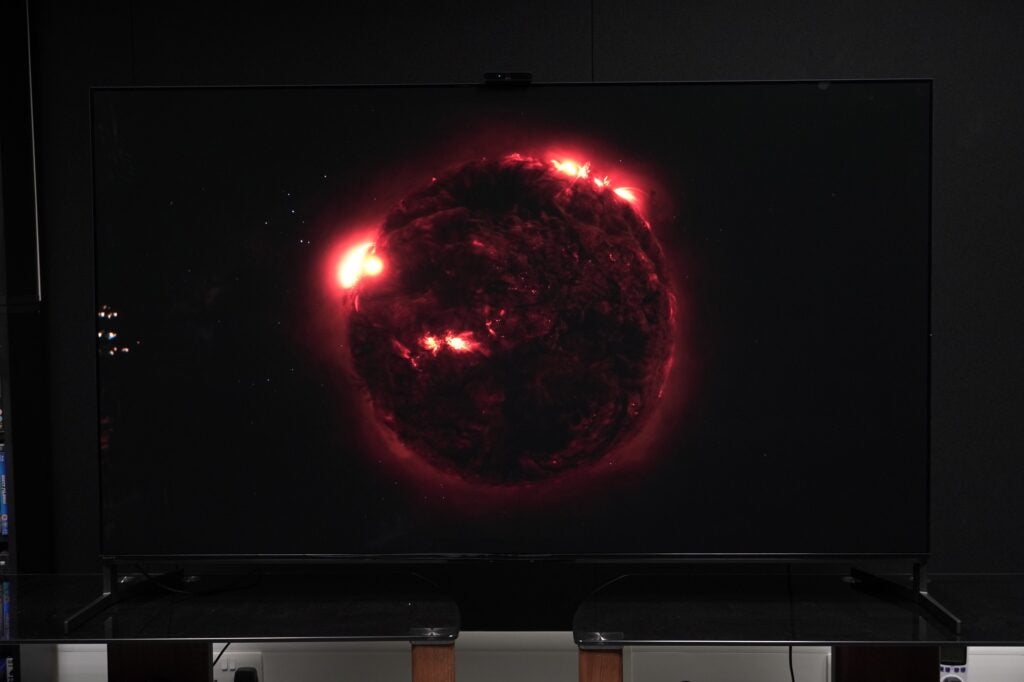
Let’s start with the measurements (which I imagine Sony loathes). The Sony A95L’s peak brightness has gone up in some picture modes: 1573 nits and 1669 nits in Professional and Vivid mode respectively on a 5% window, though rather strangely I record both Cinema and Standard modes at 525 and 507 nits on the same window, which is oddly conservative.
So although the Sony A95L is, on paper, capable of great HDR brightness, like the A95K it seems to lack interest in razzling and dazzling like the Samsung S95C or LG G3 OLEDs. The extra brightness provides headroom to improve colour volume, but unless you had a comparable OLED next to the A95L, I’m not sure you’d notice the ways in which this TV improves upon WOLED panels.
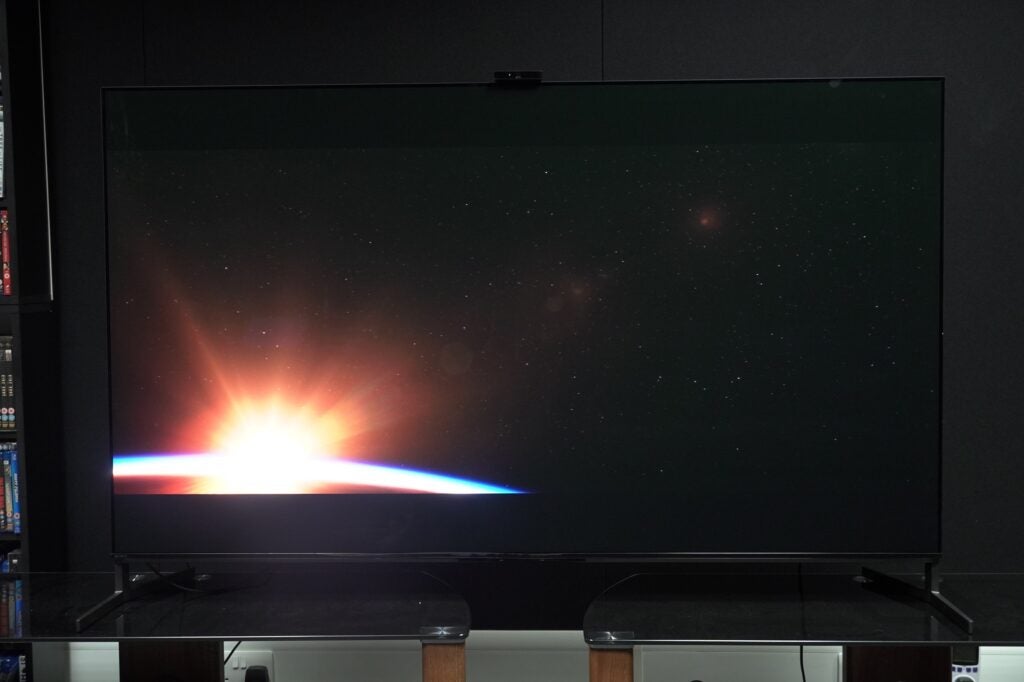
Compared to a Philips OLED908, blues are slightly brighter and luminescent, green tones have more depth, yellows have more shades to them – the differences can be subtle, but they all add up to an impressively colourful picture.
The Sony A95L does still produce a red push to skin tones and colours in general, which seems to be Sony’s preferred colour tuning as it’s evident on the A80L and X85L models. It makes for a richer (or rosier) looking image, especially with skin tones, but part of me wonders whether it’s quite as accurate to the filmmaker’s intentions.
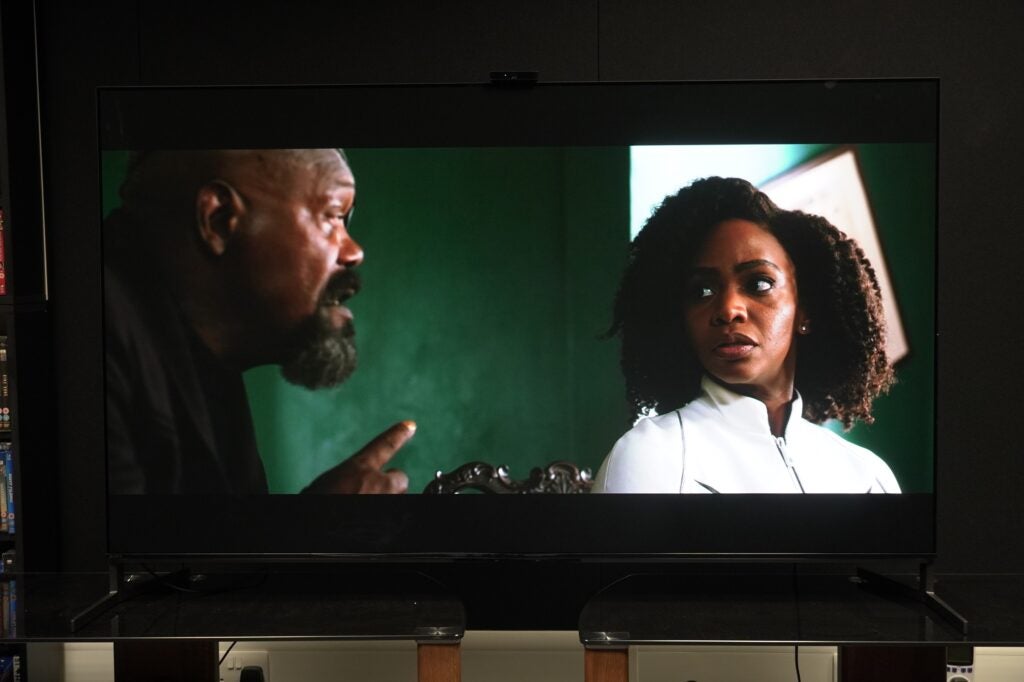
White tones are purer on this QD-OLED than they are on WOLED panels, where they appear richer but the Sony A95L makes them stand out with strong brilliance in a film such as Midsommar and The Marvels. The highlights are the area where the A95L doesn’t quite stand out compared to the Philips, as that TV looks a little brighter to my eyes.
Like the 1st gen QD-OLEDs, black levels in a bright room can look grey, but turn the lights off and they’re much stronger. However, I do think its near-dark black level performance could be improved. The Philips is much more forthcoming in giving viewers a peak into its deep blacks whereas (in a bright room at least) the Sony seems to lack detail. These are minor details – say a stack of books in a cupboard in the background of a shot – but I can see more of what’s there on the Philips than I can on the Sony.
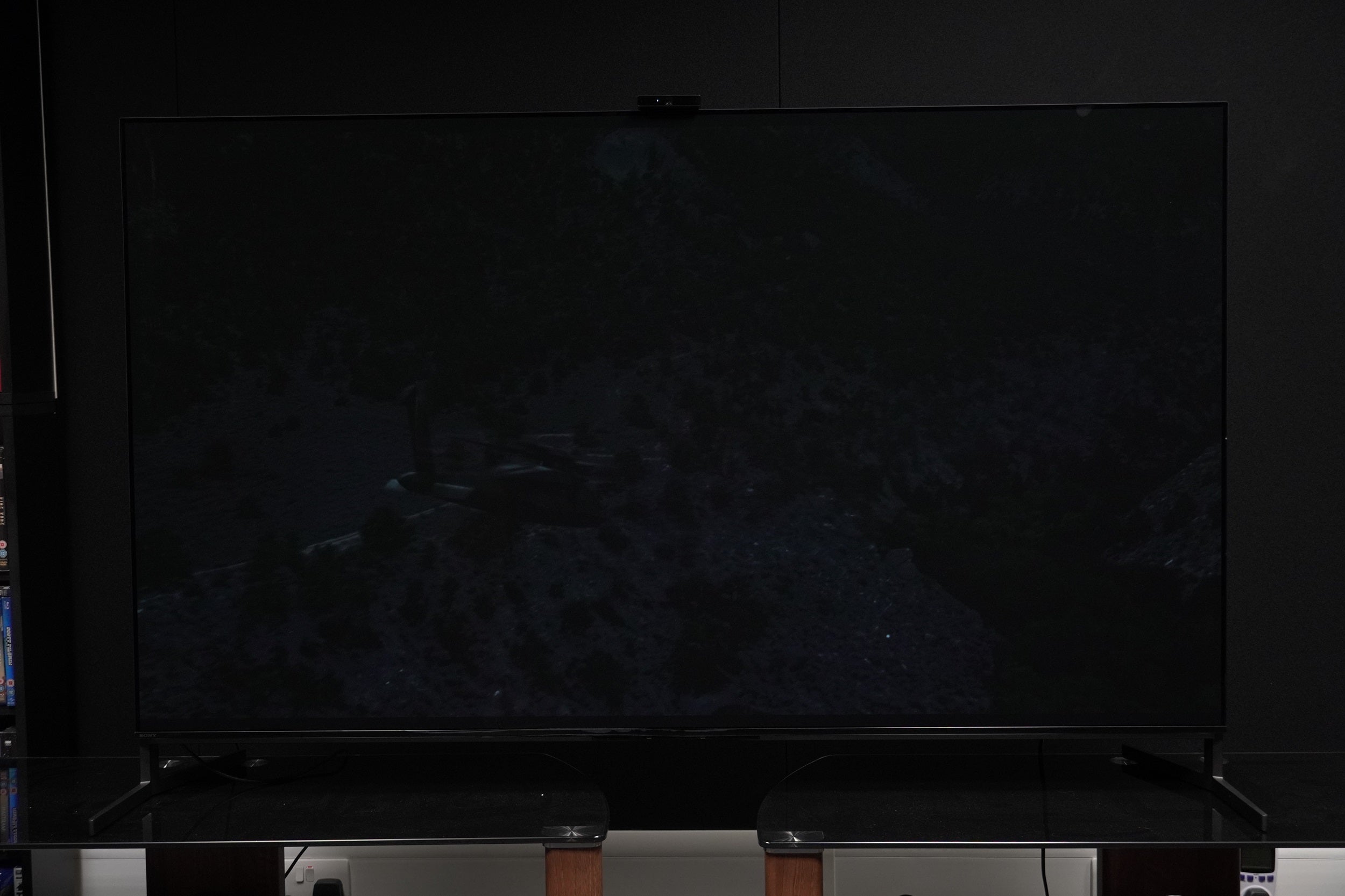

And blacks can either look a little crushed with Blade Runner 2049, or raised in a dark room viewing situation when watching Zero Dark Thirty. In its Professional mode the Sony appears to lift the black levels during the helicopter ride to the compound in the film’s third act. It’s something the LG G3, Samsung S95C and Philips OLED908 all got right but the Sony didn’t. Nevertheless, with SDR content the A95L conjures up impressively deep and rich blacks along with bright highlights to create images full of contrast.
I disagree with my esteemed colleague who reviewed the XR-55A95L – the Vivid mode isn’t bad, and I’d say it takes a conservative approach compared to LG and Samsung TVs.
Brightness is upped, but it’s not as bright as the LG G3 can hit. With Cinderella, the A95L puts the emphasis on saturation and colour volume without looking garish or unnatural, with better shadow detailing and less noise than the G3 OLED. You could question whether it’s a true ‘Vivid’ mode, and while I like the approach, it could look brighter.
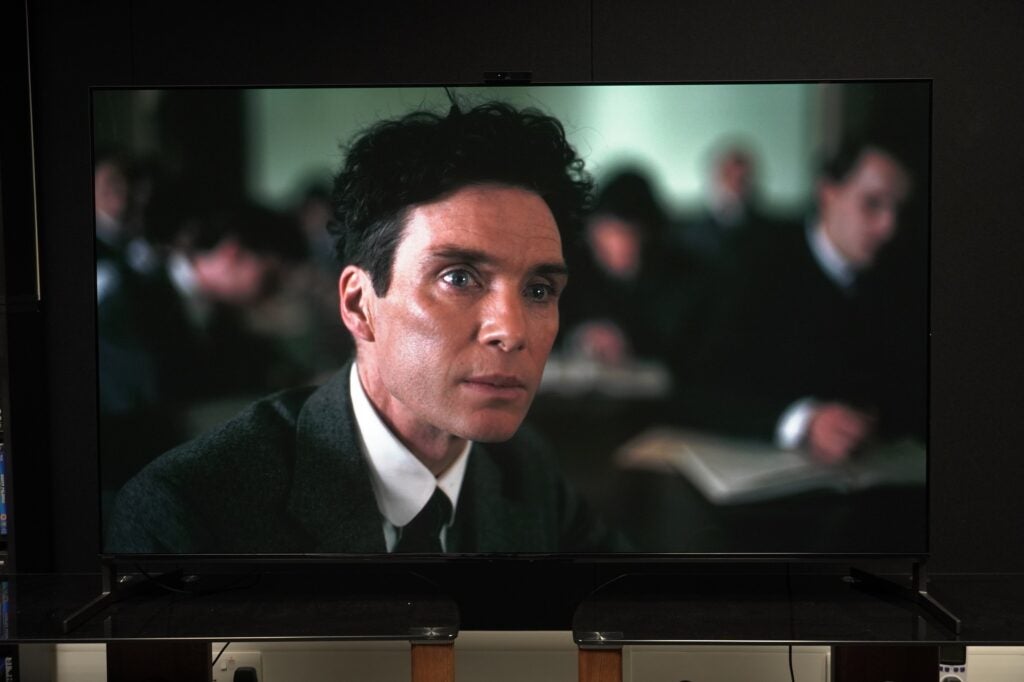
Detail levels with 4K content are impressive, as the Sony A95L puts in a performance that looks very naturalistic with a film like Oppenheimer or The Marvels without producing a picture that looks over-sharpened or heavy-handed picture processing.
Slipping down resolutions to a Blu-ray of The Amazing Spider-Man 2 and there’s no obvious artefacts that I can see, with a sharpness to how the A95L outlines its edges but the image is free from noise. Watching SDR content in Professional mode looks accurate, but isn’t too bright – swapping to Cinema mode brings out more in the blues and reds of the Time Square sequence where Spider-Man battles Electro – like the A95K, the A95L looks fabulously cinematic at times.
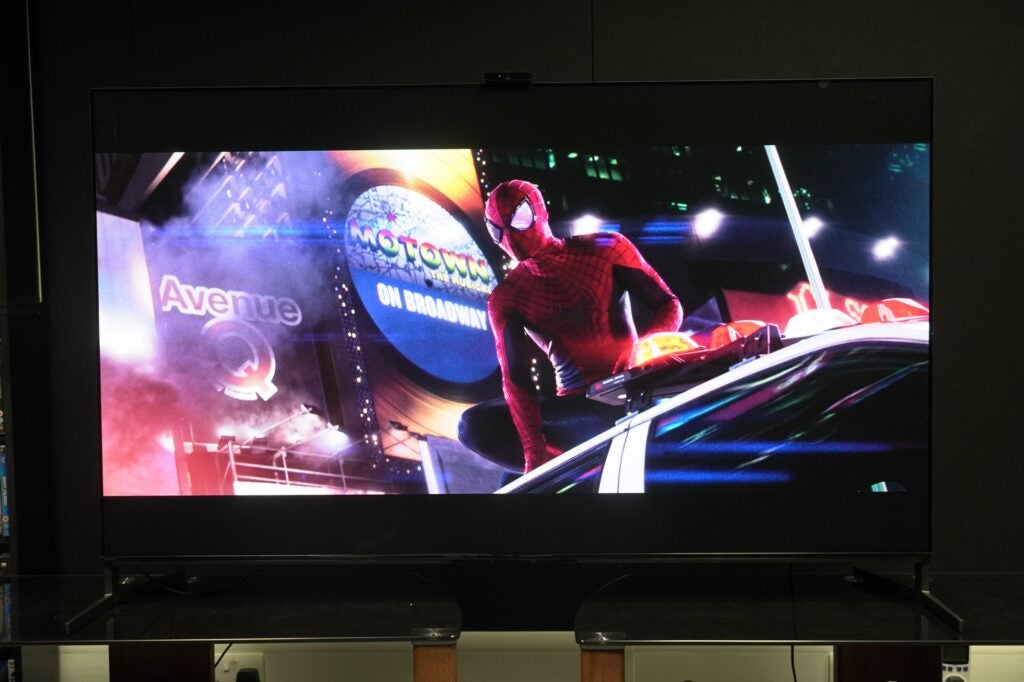
And a fall to DVD resolution of Inglorious Basterds and the Sony continues its impressive upscaling performance. I had seen a demonstration earlier in the year where the A95L struggled with low-quality content, over-sharpening to the point where it introduced ringing and noise.
In the test room the Sony A95L looked natural enough, edges handled well with enough detail wrung from the image without looking unnatural.
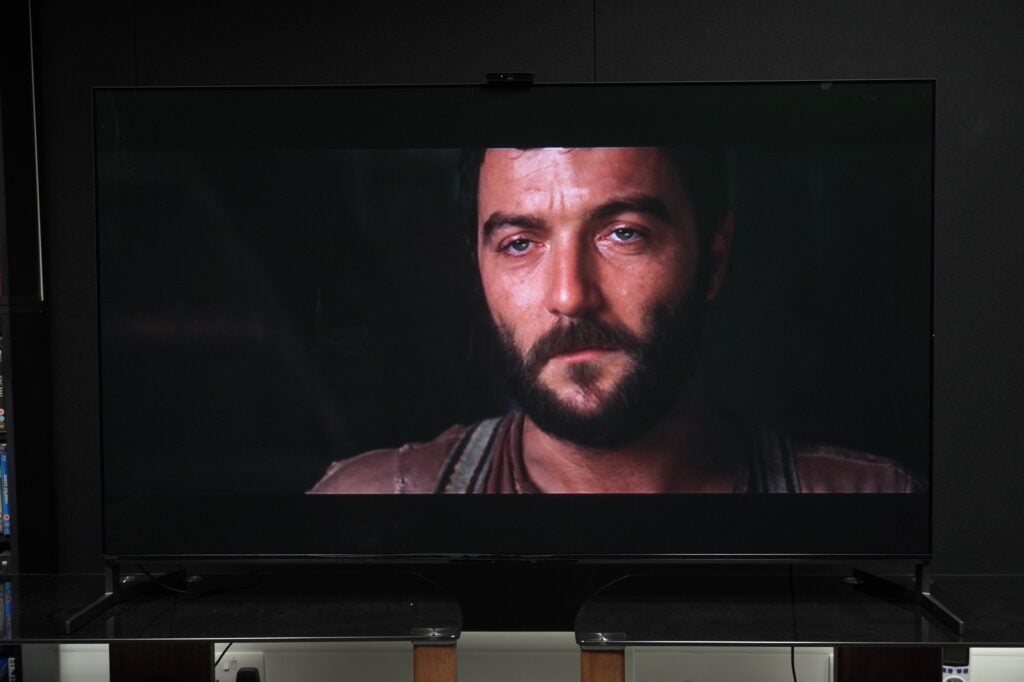
And Sony’s Motion Clarity XR continues to be the best among 4K TVs in my opinion, mainly because it doesn’t introduce as much Soap Opera Effect as other TVs. Pushed to its maximum settings there is judder, instability and blurriness with movement, but the Sony A95L keeps a steadier hand than most.
Scott Pilgrim vs the World is a film that’s full of motion and movement and I cannot stress how naturally the Sony deals with the whip camera cams, speed ramps, and quick martial arts action. With tricky content the Sony A95L can be thrown off its groove, but not as much as other flagship TVs at their limit.
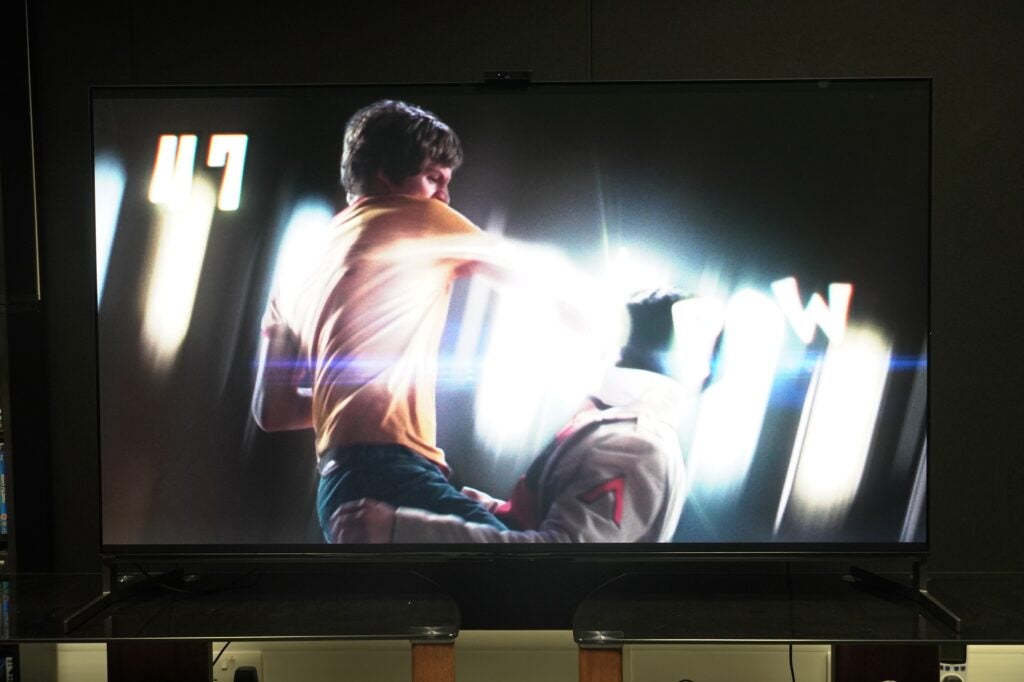
Sound Quality
- Firm sense of definition
- Good clarity with voices
- Punchy low frequencies
The Sony XR-65A95L sports the same Acoustic Surface Audio technology where the entire screen acts as a speaker. The actuators ‘vibrate’ the screen to produce the sound you hear.
The A95L sounds a little warmer than I remember the A95K sounding, but dialogue is delivered firmly and clearly while low frequencies are punchy and surprisingly big in The Amazing Spider-Man 2. It’s not a substitute for a subwoofer, but if you don’t already have a soundbar, it’ll do for the meantime.
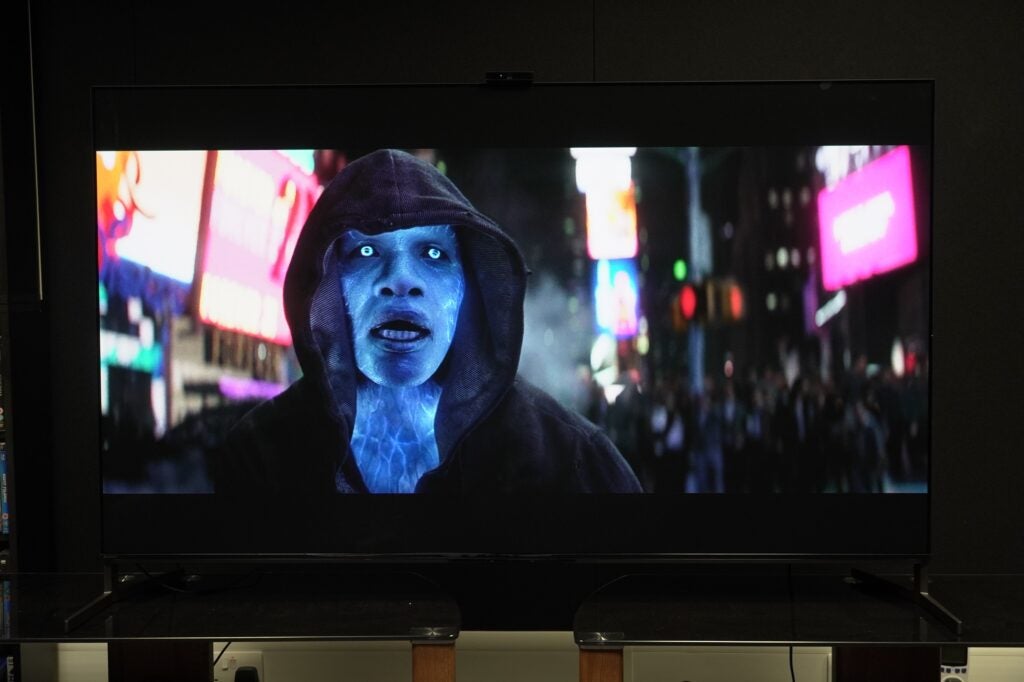
The set’s levels of dynamism, intensity and overall loudness are better than most TVs on the market, which helps with action movies, and the scale and width of its output is impressive.
I feel there are TVs that are better than it in some ways, though. The 2024 LG G4 is clearer with voices, while the Philips OLED908 is an even better all-round proposition: clearer, with more bass impact and a weightier sound compared to the Sony’s slightly thinner sense of expression. Still, this is one of the better TV sound systems I’ve encountered.
Latest deals
Should you buy it?
You should buy for its subtle, nuance picture performance
The Sony A95L doesn’t scream ‘look at me’ with its picture performance. There are subtle enhancements that wring out more potential from HDR and SDR content than traditional OLEDs.
You should not buy if you can’t justify the big price
The 65-inch Sony A95L is still around £3199, while the LG OLED65G3 is £2000, the Samsung S95C is £2099 and even the Panasonic MZ2000 can be had for £2099. That’s a big price difference.
Final Thoughts
The Sony A95L is another terrific 4K TV from the Japanese brand, with improvements – some subtle, others more obvious – across the board from brightness to gaming features and upscaling.
It’s more of a complete TV than the A95K, but there are still areas where I think it could be improved. And the A95L remains an expensive option compared to its peers. Check out our Best TV guide for more options.
How we test
We test every television we review thoroughly over an extended period of time. We use industry standard tests to compare features properly. We’ll always tell you what we find. We never, ever, accept money to review a product.
Find out more about how we test in our ethics policy.
Tested across two months
Tested with real world use
Becnhmarked with Spears and Munsil disc
FAQs
The A95L supports 300mm x 300mm VESA wall mount across all its sizes.








